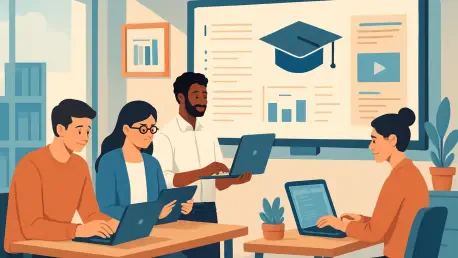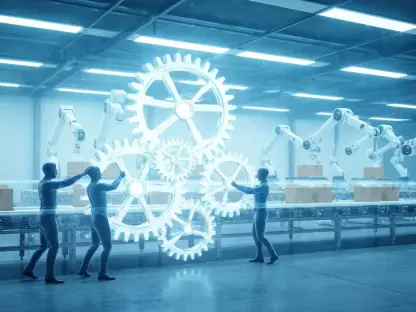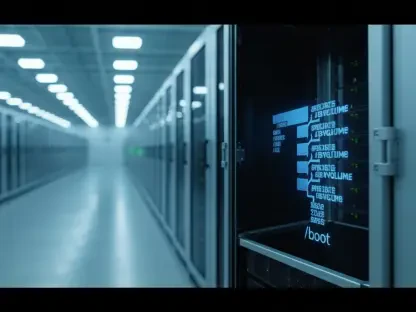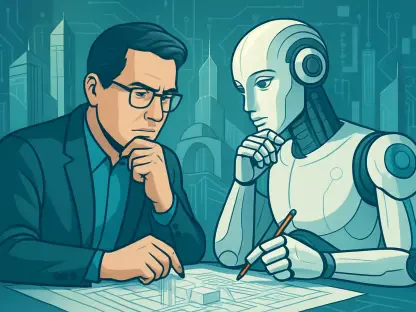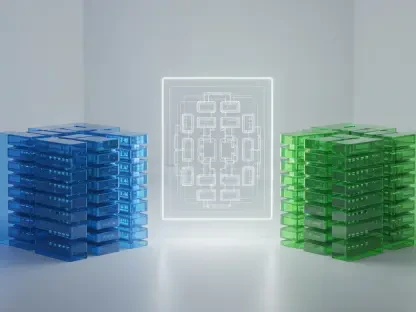Welcome to an insightful conversation with Vijay Raina, our esteemed expert in enterprise SaaS technology and software design. With a deep background in architecture and thought leadership, Vijay has dedicated his career to advancing tech practices and fostering growth in dynamic environments. Today, we dive into the critical topic of embedding continuous learning into the workplace, especially for technology professionals. Our discussion explores how learning can be seamlessly integrated into daily tasks, the challenges of retaining knowledge, and the strategies leaders can use to cultivate a culture of growth and curiosity in fast-paced tech settings.
Can you share your perspective on what ‘learning in the flow of work’ means and why it often works better than traditional training approaches like classroom sessions or online courses?
Absolutely. ‘Learning in the flow of work’ is about acquiring knowledge right when and where you need it, during the natural course of your daily tasks. Think of a developer learning a new debugging trick while fixing a bug or picking up a best practice during a code review. This is different from traditional training because it’s immediate and contextual. Classroom sessions or online courses can be great for foundational knowledge, but they often feel disconnected from the real challenges we face on the job. When learning happens in the moment, it sticks better because you’re applying it right away.
How have you seen the concept of the ‘forgetting curve’ play out in tech teams, and what impact does it have on retaining new skills?
The forgetting curve is a real challenge in tech. It shows how quickly we lose new information if we don’t use it—sometimes within days or weeks. I’ve seen this with teams learning a new framework; if they don’t apply it soon after a training session, they’re back to square one when a project calls for it. This can slow down progress and frustrate team members who feel like they’re constantly relearning. It’s a reminder that timing and reinforcement are everything in skill retention.
What are some practical ways you’ve found to combat the forgetting curve and help new knowledge stick with your teams?
One effective way is to create opportunities for immediate application. For instance, after a workshop on a new tool, I’ve encouraged teams to use it in a small project or prototype right away. Another approach is setting up knowledge-sharing sessions where team members teach what they’ve learned to others—it reinforces their own understanding. Also, having a searchable internal repository for tips and solutions helps. When someone forgets a detail, they can quickly look it up instead of starting from scratch.
Can you walk us through how the ‘Learn → Question → Answer → Apply’ cycle works in a practical scenario for a software developer or engineer?
Sure, let’s take a developer exploring a new AI library as an example. First, they ‘Learn’ by reading about the library or watching a quick tutorial. Then, they ‘Question’—maybe they’re unsure how it integrates with their existing system, so they dig deeper or ask a teammate. Next, they ‘Answer’ by finding a solution, perhaps through documentation or a peer’s advice. Finally, they ‘Apply’ by using the library in a real task, like automating a process in their project. Each step builds on the last, and by applying it, they cement the knowledge.
In your experience, how can leaders ensure the ‘Apply’ step happens quickly after learning something new to maximize retention?
Leaders need to create space for application right after learning. This could mean allocating time in a sprint to experiment with a new tool or assigning a small, relevant task that uses the new skill. I’ve found pairing new learners with mentors during this phase helps too—they get guidance on how to apply what they’ve learned in a real context. It’s about removing barriers and making it easy to jump from theory to practice without delay.
Do you agree with the idea that 70% of learning happens on the job, and if so, how have you seen this reflected in your own teams?
I completely agree. Most learning in tech isn’t from formal training; it’s from doing. In my teams, I’ve seen developers grow the most when they tackle real problems—like figuring out a tricky deployment issue during a project or learning a new design pattern through peer feedback in a code review. These moments are powerful because they’re tied to actual outcomes, not hypothetical scenarios. It’s learning by necessity, and it often sticks longer.
What kinds of on-the-job learning moments have proven most valuable for your teams, and how do you capture them for future use?
Code reviews and postmortems after incidents are goldmines for learning. In code reviews, developers often pick up better ways to structure code or avoid pitfalls. Postmortems reveal root causes of failures and spark ideas for improvement. To capture these, we document key takeaways in a shared platform—something searchable—so others can benefit later. We also encourage quick write-ups or short presentations during team meetings to spread the insights. It’s about turning individual lessons into collective knowledge.
How do you define intentional learning in a high-speed tech environment, and what does it look like in practice?
Intentional learning means deliberately carving out time and resources to grow skills, even in a fast-moving setting. It’s not just hoping learning happens by accident. In practice, it could look like dedicating a portion of every sprint—say, 10%—to exploring new technologies or refining processes. For example, I’ve had teams set aside time to experiment with emerging tools, then share their findings. It’s about prioritizing growth alongside deadlines, treating learning as a core part of the job.
How can leaders balance the demands of project timelines with the need to set aside time for intentional learning?
It’s tricky, but it starts with reframing learning as an investment, not a cost. Leaders can integrate learning into existing workflows—for instance, using sprint planning to identify a learning goal tied to the project. I’ve also found that small, consistent efforts work better than big, disruptive training blocks. Maybe it’s a 30-minute weekly session to discuss a new concept, or rotating who leads a quick demo on a tool. Communicating that learning boosts efficiency long-term helps get buy-in from teams under deadline pressure.
What’s your forecast for the future of continuous learning in tech workplaces, especially with the rapid evolution of tools like AI?
I think continuous learning will become even more embedded in how we work, especially as AI and other technologies keep accelerating change. We’ll see learning shift further into real-time, contextual experiences—think AI tools suggesting resources or solutions as you code. I also expect a bigger focus on peer-to-peer learning, with platforms making it easier to share knowledge instantly across teams. The challenge will be keeping up with the pace while ensuring learning is meaningful, not just reactive. It’s an exciting time, but it’ll demand adaptability from both individuals and organizations.
